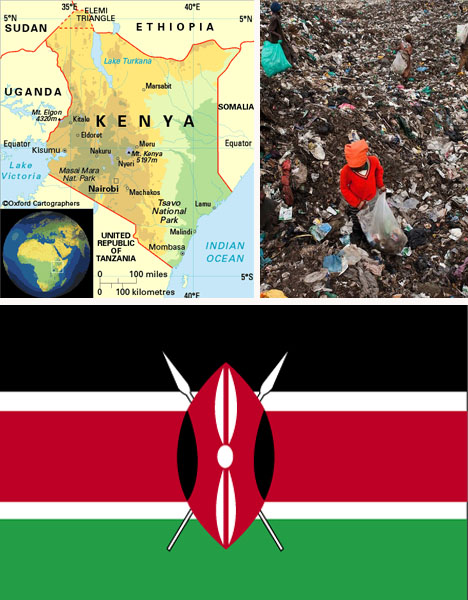In the most populated Kenyan city — a region of great extremes where abject poverty is frequently overshadowed by tourist-drawing safari experiences — lush and densely tree-covered Nairobi (the largest city in east Africa) maintains a robust financial and cosmopolitan air despite harboring a staggeringly dirty secret.
Located just 2.5 miles away from the city center, the Dandora Dumpsite has for the last 30 years been the final resting place for the garbage of Nairobi’s millions of residents despite it reaching maximum capacity in 2001. This is certainly unusual given the fact that landfills are typically subject to closure after 10 to 15 years, but this particular 30-acre waste zone, referred to by the locals as the “dumpsite of death,” has earned its bad reputation due to its restriction-free status, making everything from industrial, agricultural and domestic to red-bag medical waste fair game. Prior to opening its doors for business, the land beneath Dandora Dumpsite (a former rock quarry) was never prepped with any type of protective liner system, so after more than three decades of haphazard disposal, a number of significant environmental and health consequences have resulted from the 2,000+ metric tons of daily waste that the site receives. The most prominent concerns include leachate-tainted groundwater, Nairobi River pollution, toxic air emissions (every year, hundreds of children die from exposure to incineration fumes, dioxins and excessive methane exposure) and heavy metal soil contamination. As a result, there has been a notable increase in health ailments (particularly of the respiratory system, abdomen, skin and eyes) among the local population. Slightly more troubling, Dandora has long been a haven for members of organized crime who require dump trucks to pay them a fee prior to entry. These cartel members also strategize their game plans amid the rubble and are even rumored to bury their murder victims there. Here’s where things get even stickier. Despite the blatant threat to their health, approximately 6,000 garbage collectors regard Dandora as their sole livelihood, plucking anything of value from the mountains of trash without donning protective gear — things like electronics, plastic, glass, metal and rubber, as well as more eyebrow-raising items such as discarded food and meat bones. The reward for their 5-a.m.-to-sundown workday? Up to $2.50 U.S. Generations of school children have even skipped out on classes in favor of descending upon Kenya Airways’ waste trucks due to the partially eaten yet still apparently highly desirable treats that are consistently cast aside by airline passengers.
- Waste collectors are opposed to relocation because they fear the loss of their financial stability.
- The Dandora Dumpsite is so thoroughly contaminated that experts say converting it into agricultural land is out of the question.
- Nairobi’s trash collection system is currently privatized.
- 15 years would have to pass before the dumpsite could be transformed into a residential zone. In the meantime, it has to be entirely fenced in to prevent public access — a pricey endeavor.
- Even if the municipality found a suitable new landfill site, trash would have to be relocated there — labor intensive and costly — plus, the new area would have to be equipped with multiple membranes and a comprehensive methane-channeling pipe system.
- Overall, lack of financial resources and a viable plan of implementation continue to stall progress.